 W
WThe Stuart period of British history lasted from 1603 to 1714 during the dynasty of the House of Stuart. The period ended with the death of Queen Anne and the accession of King George I from the German House of Hanover.
 W
WThe English Renaissance was a cultural and artistic movement in England dating from the late 15th century to the early 17th century. It is associated with the pan-European Renaissance that is usually regarded as beginning in Italy in the late 14th century. As in most of the rest of northern Europe, England saw little of these developments until more than a century later. The beginning of the English Renaissance is often taken, as a convenience, to be 1485, when the Battle of Bosworth Field ended the Wars of the Roses and inaugurated the Tudor Dynasty. Renaissance style and ideas, however, were slow to penetrate England, and the Elizabethan era in the second half of the 16th century is usually regarded as the height of the English Renaissance.
 W
WThe Amboyna massacre was the 1623 torture and execution on Ambon Island of twenty men, including ten of whom were in the service of the English East India Company, and Japanese and Portuguese traders, by agents of the Dutch East India Company (VOC), on accusations of treason. It was the result of the intense rivalry between the East India companies of England and the United Provinces in the spice trade and remained a source of tension between the two nations until late in the 17th century.
 W
WAn Agreement of the People was a series of manifestos, published between 1647 and 1649, for constitutional changes to the English state. Several versions of the Agreement were published, each adapted to address not only broad concerns but also specific issues during the fast changing revolutionary political environment of those years. The Agreements of the People have been most associated as the manifestos of the Levellers but were also published by the Agitators and the General Council of the New Model Army.
 W
WBarebone's Parliament, also known as the Little Parliament, the Nominated Assembly and the Parliament of Saints, came into being on 4 July 1653, and was the last attempt of the English Commonwealth to find a stable political form before the installation of Oliver Cromwell as Lord Protector. It was an assembly entirely nominated by Oliver Cromwell and the Army's Council of Officers. It acquired its name from the nominee for the City of London, Praise-God Barebone. The Speaker of the House was Francis Rous. The total number of nominees was 140, 129 from England, five from Scotland and six from Ireland.
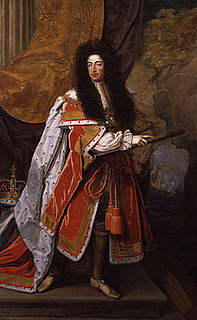 W
WThe Battle of Reading took place on 9 December 1688 in Reading, Berkshire. It was one of only two substantial military actions in England during the Glorious Revolution, and was a decisive victory for forces loyal to William III of Orange. The victory was celebrated in Reading for many years.
 W
WThe Bloody Assizes were a series of trials started at Winchester on 25 August 1685 in the aftermath of the Battle of Sedgemoor, which ended the Monmouth Rebellion in England.
 W
WThe Caroline era refers to the period in English and Scottish history named for the 24-year reign of Charles I (1625–1649). The term is derived from Carolus, the Latin for Charles. The Caroline era followed the Jacobean era, the reign of Charles's father James I & VI (1603–1625), overlapped with the English Civil War (1642–1651), and was followed by the English Interregnum until The Restoration in 1660. It should not be confused with the Carolean era which refers to the reign of Charles I's son King Charles II.
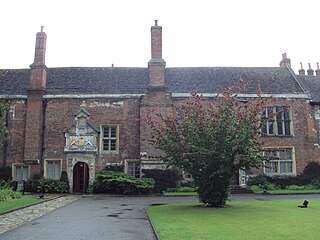 W
WThe Council of the North was an administrative body set up in 1472 by King Edward IV of England, the first Yorkist monarch to hold the Crown of England, to improve government control and economic prosperity, to benefit all of Northern England. Edward's brother, Richard, Duke of Gloucester was its first Lord President.
 W
WThe Court of the Council in the Dominion and Principality of Wales, and the Marches of the same, commonly called the Council of Wales and the Marches was a regional administrative body based in Ludlow Castle within the Kingdom of England between the 15th and 17th centuries, similar to the Council of the North. Its area of responsibility varied but generally covered all of modern Wales and the Welsh Marches of Shropshire, Herefordshire, Worcestershire, Cheshire and Gloucestershire/Bristol.
 W
WThe Commonwealth was the political structure during the period from 1649 to 1660 when England and Wales, later along with Ireland and Scotland, were governed as a republic after the end of the Second English Civil War and the trial and execution of Charles I. The republic's existence was declared through "An Act declaring England to be a Commonwealth", adopted by the Rump Parliament on 19 May 1649. Power in the early Commonwealth was vested primarily in the Parliament and a Council of State. During the period, fighting continued, particularly in Ireland and Scotland, between the parliamentary forces and those opposed to them, as part of what is now generally referred to as the Third English Civil War.
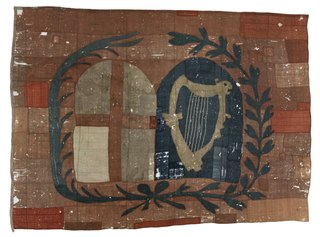 W
WThere were a variety of flags flown by ships of the Commonwealth during the Interregnum of 1649–1660.
 W
WThe Glorious Revolution of November 1688, or Revolution of 1688, covers events leading to the deposition of James II and VII, king of England, Scotland and Ireland, and his replacement by his daughter Mary II, and her Dutch husband, William III of Orange. While the Revolution was quick and relatively bloodless, establishing the new regime took much longer and led to significant casualties. The term was first used by John Hampden in late 1689.
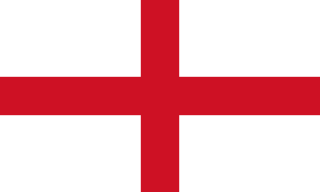 W
WThe Interregnum was the period between the execution of Charles I on 30 January 1649 and the arrival of his son Charles II in London on 29 May 1660 which marked the start of the Restoration. During the Interregnum, England was under various forms of republican government.
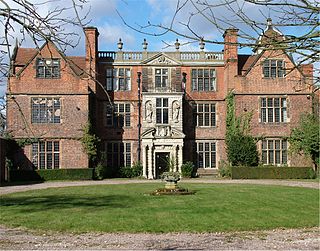 W
WThe Jacobean style is the second phase of Renaissance architecture in England, following the Elizabethan style. It is named after King James I of England, with whose reign it is associated. At the start of James' reign there was little stylistic break in architecture, as Elizabethan trends continued their development. However, his death in 1625 came as a decisive change towards more classical architecture, with Italian influence, was in progress, led by Inigo Jones; the style this began is sometimes called Stuart architecture, or English Baroque.
 W
WThe Jacobean era was the period in English and Scottish history that coincides with the reign of James VI of Scotland who also inherited the crown of England in 1603 as James I. The Jacobean era succeeds the Elizabethan era and precedes the Caroline era. The term "Jacobean" is often used for the distinctive styles of Jacobean architecture, visual arts, decorative arts, and literature which characterized that period.
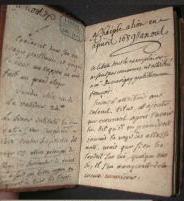 W
WKilling No Murder is a pamphlet published in 1657 during The Protectorate period of the English Interregnum era of English history. The pamphlet of disputed authorship advocates the assassination of Oliver Cromwell. The publication was in high demand at the time of its distribution. Cromwell was said to have been so disturbed after the publication of Killing No Murder that he never spent more than two nights in the same place and always took extreme precaution in planning his travel.
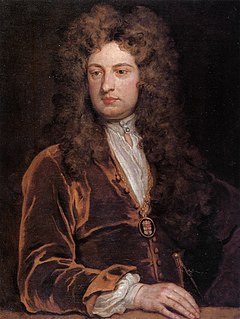 W
WThe Kit-Cat Club was an early 18th-century English club in London with strong political and literary associations. Members of the club were committed Whigs. They met at the Trumpet tavern in London and at Water Oakley in the Berkshire countryside.
 W
WThis is a list of the members of the British nobility and gentry, who in 1688 deserted King James II and pledged their allegiances to Prince William of Orange, as the events of the Glorious Revolution unfolded.Admiral Matthew Aylmer, who played a significant role in diverting the loyalty of the Royal Navy from King James to William of Orange. Colonel Berkley, possibly Lord Fitzharding. Captain Henry Bertie, brother of the Earl of Abingdon. Squire Bray Henry Booth, 2nd Baron Delamere, took arms in Cheshire on November 1688, appearing in Manchester with 50 armed and mounted men, which had trebled before reaching Bowden Downs. James Butler, 2nd Duke of Ormonde William Cavendish, 4th Earl of Devonshire, appeared in arms at Derby, proceeded to Nottingham, which soon became the headquarters of the Northern insurrection. John Cecil, 5th Earl of Exeter Hugh Cholmondeley, 2nd Viscount Cholmondeley, joined the northern insurrection at Nottingham in 1688, created Baron in 1689 and Earl in 1706. Charles Cokayne, 3rd Viscount Cullen Squire Coote George Compton, 4th Earl of Northampton Henry Compton, youngest son of the 2nd Earl of Northampton, Bishop of London, P.C. George Churchill (1653–1710), brother of John Churchill and captain at sea, afterwards admiral. John Churchill, Baron Churchill of Sandridge (1650–1722), deserted on 25 Nov 1688, arguably "the death-blow for the Royal Cause". Afterwards created Earl and later Duke of Marlborough and captain-general. Sir Richard Dutton, or possibly Sir Ralph Dutton, MP for Gloucester Thomas Fairfax, 5th Lord Fairfax of Cameron, MP for York. Charles Fane, 3rd Earl of Westmorland Henry FitzRoy, 1st Duke of Grafton, the first who on 24 November 1688 deserted the King's camp, accompanied by John Churchill. Charles Gerard, 1st Earl of Macclesfield, an "ancient Cavalier who had fought for Charles I, and had shared the exile of Charles II", assembled with William at the Hague in 1688. John Granville, 1st Earl of Bath, placed the fortress at Plymouth, which he commanded, at William's disposal on 18 November 1688, when William had arrived at Exeter. "The invaders therefore had now not a single enemy in their rear." Thomas Grey, 2nd Earl of Stamford Captain Griffith Sir John Guise, Baronet, MP for Gloucester Henry Hamilton-Moore, 3rd Earl of Drogheda Sir Edward Harley, Baronet, in November 1688 took up arms in Worcestershire on behalf of the Prince of Orange. Arthur Herbert, vice admiral, created Earl of Torrington in 1689. Henry Herbert, 4th Baron Herbert of Cherbury, in November 1688 took up arms in Worcestershire on behalf of the Prince of Orange. Henry Howard, 7th Duke of Norfolk, with 300 armed and mounted men, in November 1688 appeared in the market place of Norwich, where he was joined by the mayor and Alderman. Edward Hyde, Lord Cornbury (1661–1723), son of the Earl of Clarendon and one of the first royal commanders to desert. He was the senior officer at Salisbury and deserted with as many troops as he could induce to follow him. Henry Hyde, 2nd Earl of Clarendon (1638–1709), father of Lord Cornbury Robert Leke, 3rd Earl of Scarsdale John Lovelace, 3rd Baron Lovelace, set out for Exeter to join the Prince of Orange, but was taken prisoner at Gloucester. Richard Lumley seized Newcastle for William, created Viscount Lumley in 1689 and Earl of Scarborough in 1690. John Manners, 9th Earl of Rutland Squire Marle Charles Montagu, 4th Earl of Manchester, moved to Nottingham and was joined by Lord Cholmondeley and by Lord Grey de Ruthyn. Edward Osborne, Viscount Latimer, son the Earl of Danby. Peregrine Osborne, Lord Dunblane, son the Earl of Danby. Thomas Osborne, 1st Earl of Danby (1631–1712), seized York for William, was created Duke of Leeds in 1694. James Paynter, tried for and later acquitted of treason in Cornwall. Sir Robert Peyton, Baronet, colonel in the Dutch invasion Charles Powlett, Earl of Wiltshire Charles Bodvile Robartes, 2nd Earl of Radnor Richard Savage, Lord Colchester, son of Earl Rivers Charles Seymour, 6th Duke of Somerset Robert Shirley, Lord Ferrers of Chartley Philip Stanhope, 2nd Earl of Chesterfield Charles Talbot, 12th Earl of Shrewsbury Squire Tibbing, probably Squire Thomas Tipping (1653–1718), former MP for Oxfordshire who had fled to the Netherlands due to a scandal Sir John Trelawney, possibly Sir Jonathan Trelawny, 3rd Baronet Squire Trenchard (1635–1713), possibly William Trenchard of Cutteridge, Wiltshire Henry Yelverton, 15th Baron Grey de Ruthyn, joined the Northern insurrection in 1688, created Viscount de Longueville in 1690.
 W
WPlantations in 16th- and 17th-century Ireland involved the confiscation of Irish-owned land by the English Crown and the colonisation of this land with settlers from Great Britain. The Crown saw the plantations as a means of controlling, anglicising and 'civilising' parts of Ireland. The main plantations took place from the 1550s to the 1620s, the biggest of which was the plantation of Ulster. The plantations led to the founding of many towns, demographic and economic changes, changes in land ownership and the landscape, and also to ethnic and sectarian conflict. They took place before and during the earliest English colonisation of the Americas, and a group known as the West Country Men were involved in both Irish and North American colonization.
 W
WThe Restoration of the Stuart monarchy in the kingdoms of England, Scotland and Ireland took place in 1660 when King Charles II returned from exile in Europe. The preceding period of the Protectorate and the civil wars came to be known as the Interregnum (1649–1660).
 W
WThe Rye House Plot of 1683 was a plan to assassinate King Charles II of England and his brother James, Duke of York. The royal party went from Westminster to Newmarket to see horse races and were expected to make the return journey on 1 April 1683, but because there was a major fire in Newmarket on 22 March, the races were cancelled, and the King and the Duke returned to London early. As a result, the planned attack never took place.
 W
WThe Seven Bishops were members of the Church of England tried and acquitted for seditious libel in June 1688.
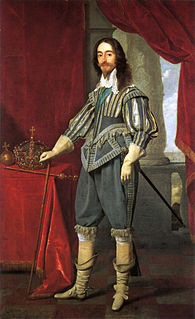 W
WThe Spanish match was a proposed marriage between Prince Charles, the son of King James I of Great Britain, and Infanta Maria Anna of Spain, the daughter of Philip III of Spain. Negotiations took place over the period 1614 to 1623, and during this time became closely related to aspects of British foreign and religious policy, before breaking down completely.
 W
WThe Treaty of Westminster, concluded between the Lord Protector of the English Commonwealth, Oliver Cromwell, and the States General of the United Netherlands, was signed on 5/15 April 1654. The treaty ended the First Anglo-Dutch War (1652–1654). The treaty is otherwise notable because it is one of the first treaties implementing international arbitration as a method of conflict resolution in early modern times. A secret clause, obliging the States of Holland to enact the Act of Seclusion, played an important part in Dutch internal politics during the First Stadtholderless Period.
 W
WA Williamite was a follower of King William III of England who deposed King James II and VII in the Glorious Revolution. William, the Stadtholder of the Dutch Republic, replaced James with the support of English Whigs.